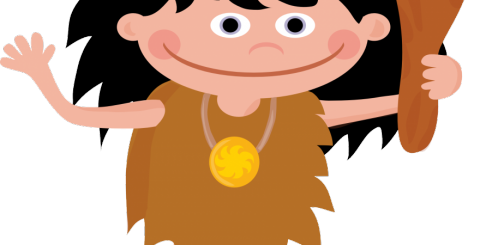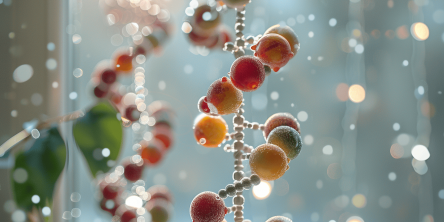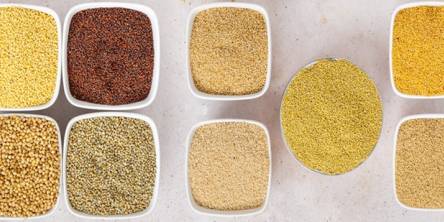The Paleo Diet - Everything You Need To Know

The Basics of the Paleo Diet
It seems that nearly every day, Americans are obsessed with the latest diet and exercise fads that come and go like mushrooms. From CrossFit to South Beach, hundreds of different fitness plans, workouts, and diets have popped up. Some of these have had their 15 seconds of fame while others seem to be staying the distance. One of the latest and most popular diets is known as the caveman or "paleo" diet.
What is it?
The paleo (short for Paleolithic) diet instructs people to eat like our ancestors, the cavemen, did. They subsided on meats, leafy greens, nuts, seeds and fruits to get by. The cavemen did not have processed foods or complex carbohydrates; instead, they had what nature offered. Therefore, people on the paleo diet do not eat grains, dairy, legumes, and many oils.
Where did it come from?
The modern version of the caveman diet as we now know it first became known in the mid-1970s. Walter Voegtlin, a gastroenterologist, first coined the paleo term with the diet being further developed in the 1980s by scientists Stanley Boyd and Melvin Konner. However, the paleo explosion did not occur until nearly 20 years after this development.
The paleo diet became wildly popular in 2002 after a book with the same name was released by Loren Cordain. In the book, Cordain recommends consuming a daily intake of 55% lean protein or fish, and 15% each of fruit, vegetables, and nuts and seeds. There is to be no dairy or greens, and no added sugar or salt. Not only will eating more protein help people feel full for longer, but it can also boost metabolism and aid in weight loss. However, some people end up having certain vitamin deficiencies if the diet is not done properly. Therefore, a doctor's advice is always wise before beginning any diet.
Health effects of the diet
Millions of people across the world have jumped on the paleo bandwagon. In fact, it was the most-searched-for diet on Google in 2012. Many health officials and fitness experts agree that the reduction in processed foods, sugars, and carbohydrates that goes along with the diet is in-line with recommendations and can be helpful in losing weight. However, other aspects of the diet are a bit more controversial. In addition to the deficiencies mentioned earlier, many paleo followers have experienced high amounts of mercury in their systems due to the toxicity of certain fish.
The paleo lifestyle
The paleo diet has introduced an entire lifestyle for many followers. This lifestyle revolves around the idea that humans today need to replicate the hunter-gatherer mindset that their ancestors subscribed to thousands of years ago. Agriculture, which wasn't developed until the Neolithic period, brought about big changes to diet and lifestyles. Followers of a paleo lifestyle argue that humans have not yet evolved enough to embrace this ideal and should instead stick with that which we are ready for or, a paleolithic way of life.
The paleo lifestyle extends beyond just what followers eat and how they act. In addition to the psychological factor, some argue that many chronic illnesses are directly caused by the current Western diets that most subscribe to. Follows state that because humans have not evolved to handle these types of diets, a paleolithic diet and lifestyle is preferable and better for the current physical and genetic state of mankind.
The Bottom Line on Paleo
The paleolithic diet and lifestyle remain popular and more than likely will be around for a while. Its proponents claim overall better health and wellness while some remain skeptical due to a lack of scientific evidence to back up any claims. People who believe in the diet hope that future studies will show that living like cavemen is the right way to be.
Similar Articles
Coping with Ulcerative Colitis can be challenging, and many people look toward gentle, natural pr
Fatty liver, known as Yakrit Roga in Ayurveda, occurs when excessive fat accumulates in the liver cells. This condition is becoming increasingly common due to sedentary lifestyles, poor diet, stress, and unhealthy eating habits.
Epilepsy is a chronic neurological condition marked by recurrent seizures — sudden bursts of electrical activity in the brain that can cause changes in behavior, awareness, or movement.
The ketogenic diet is one of the most popular dietary patterns globally, primarily adopted for weight loss. It is a high-fat, low-carbohydrate, and moderate-protein eating plan that promotes the production of ketones in the liver.
When it comes to achieving fitness and health goals, selecting the right diet plan can be challenging. Among the myriad of options available, the CICO (Calories In, Calories Out) diet and the KETO (Ketogenic) diet are two popular approaches.
Boost your health with nutrient-rich fruits and vegetables! Discover the best options to enhance immunity, energy, and overall well-being in your daily diet.
Diet and energy metabolism have been shown to affect gene expression greatly, which in turn influences human health and disease. Epigenetics serves as a mechanistic link between energy metabolism and gene expression control.
Dealing with digestive problems on a regular basis can be difficult. An upset stomach, gas, heartburn, nausea, constipation, or diarrhea are all too prevalent and can have a negative impact on your quality of life. The good news is that simple dietary modifications can do wonders for your gut health, potentially relieving many issues
Millets are a profoundly different group of little cultivated grasses, broadly grown all over the world as cereal yields or grains for cattle fodder and human food. Most species by and large alluded to as millets have a place with the clan Panicea









